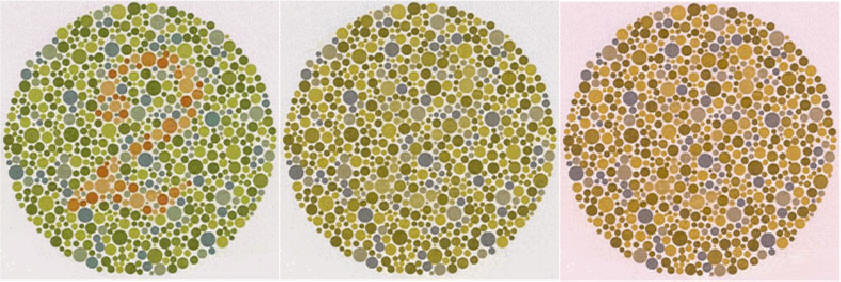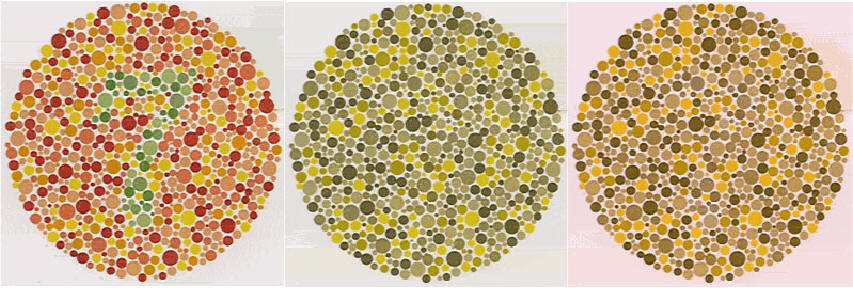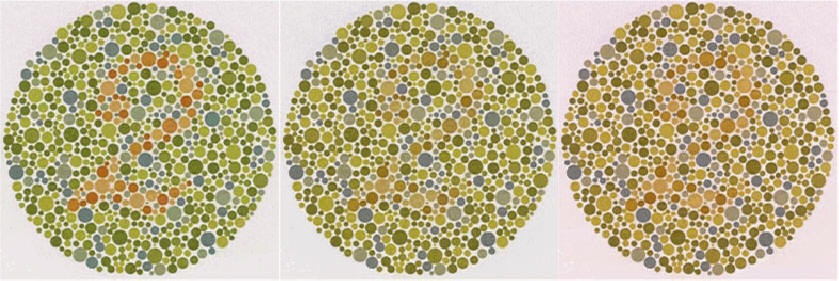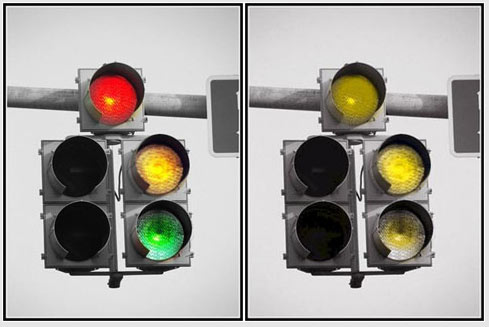How the Color Deficient Person Sees the World (9 pictures)
Color blindness, or color vision deficiency, is the inability or decreased ability to see color, or perceive color differences, under normal lighting conditions. Color blindness affects a significant percentage of the population. There is no actual blindness but there is a deficiency of color vision.
The most usual cause is a fault in the development of one or more sets of retinal cones that perceive color in light and transmit that information to the optic nerve. Color blindness can also be produced by physical or chemical damage to the eye, the optic nerve, or parts of the brain.
The English chemist John Dalton published the first scientific paper on this subject in 1798, “Extraordinary facts relating to the vision of colours”, after the realization of his own color blindness. Because of Dalton’s work, the general condition has been called daltonism. [via]
This is how numbers look to a dichromate (only two photopigments) on a color vision test.
*Tritan is not included because it is extremely rare.









